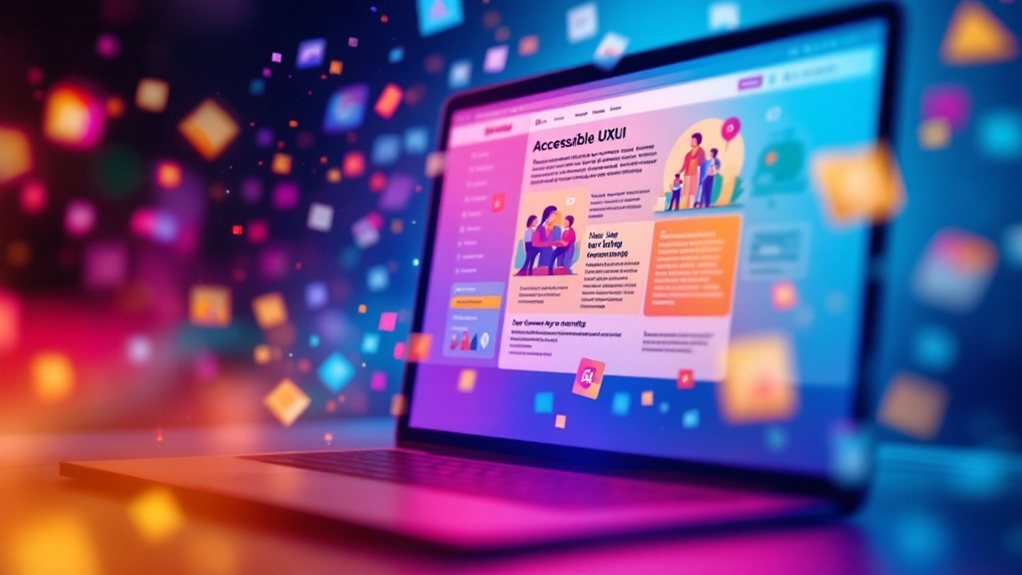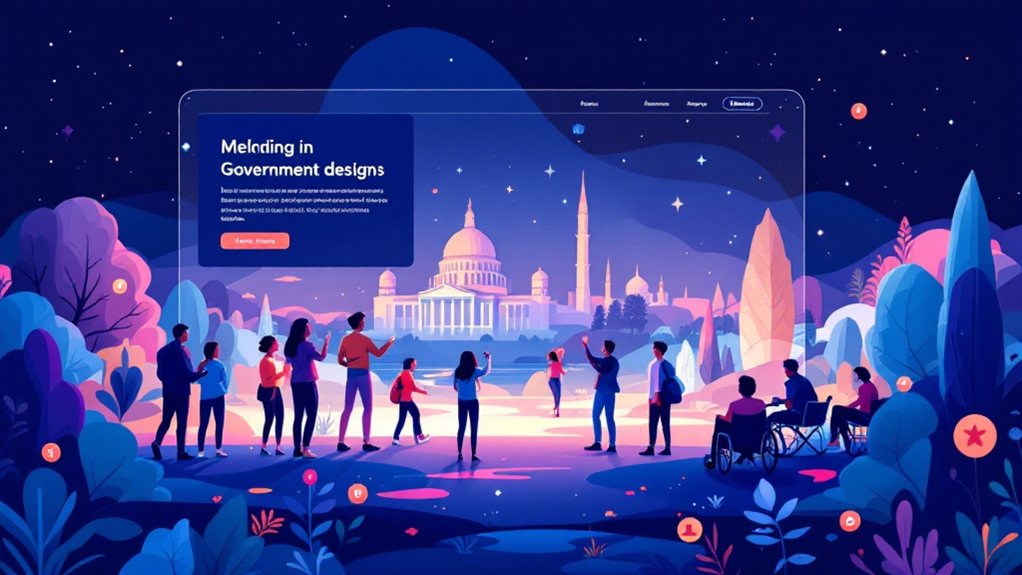Accessible UX/UI for government and non-profit websites isn't just the right thing to do – it's the law. You'll enhance inclusivity, improve usability for all users, and expand access to vital digital services. It demonstrates your commitment to social responsibility and builds trust in your organization. If you'd like to learn more about the key benefits, keep reading.
Key Takeaways
- Compliance with accessibility laws like Section 508 and ADA, which mandate inclusive digital experiences and can result in legal action for non-compliance.
- Fostering an equitable and welcoming environment for users of diverse abilities, benefiting the entire audience and enhancing the user experience.
- Improving usability and content accessibility for all users, regardless of their devices, technical proficiencies, or abilities.
- Demonstrating social responsibility and a commitment to inclusivity, which strengthens the organization's reputation as a forward-thinking and community-oriented entity.
- Expanding access to digital services and empowering underserved communities, including individuals with disabilities and older adults.
Legal and Regulatory Obligations

While government and non-profit organizations have a moral obligation to provide accessible digital experiences, they also have legal and regulatory requirements to fulfill. Section 508 of the Rehabilitation Act and the Americans with Disabilities Act mandate that all electronic and information technology developed, procured, maintained, or used by the federal government be accessible to people with disabilities. Many states have similar laws, and the Web Content Accessibility Guidelines (WCAG) serve as the industry standard for accessible web design. Ignoring these laws can lead to legal action and hefty fines. Accessibility isn't just the right thing to do – it's the law.
Enhancing Inclusivity and Equity
Accessible digital experiences aren't just a legal requirement – they're an opportunity to enhance inclusivity and equity for your organization. By prioritizing accessibility, you can ensure your website and content are inclusive and usable for people with diverse abilities. This fosters a welcoming environment that values all users. Accessibility benefits everyone, not just those with disabilities. It enhances the user experience, making your digital presence more intuitive and navigable. When you design with accessibility in mind, you demonstrate your commitment to equity and demonstrate you care about the needs of your entire audience. Accessible UX/UI is a strategic investment that pays dividends in user trust, engagement, and social impact.
Improving Usability for All Users

Designing for usability benefits all your users, not just those with disabilities. When your website is easy to navigate, your audience can quickly find the information they need. This improves their overall experience and the likelihood they'll return. Usability also ensures your content is accessible to users with diverse abilities, devices, and technical proficiencies. By considering factors like clear labeling, consistent design, and mobile optimization, you create a inclusive digital environment. Ultimately, improving usability makes your website work better for everyone. This demonstrates your commitment to serving the public good and reinforces trust in your organization.
Demonstrating Social Responsibility
Embracing accessible design showcases your organization's social responsibility. It demonstrates your commitment to inclusivity and ensuring all users, regardless of ability, can effectively navigate and engage with your online presence. An accessible website caters to individuals with diverse needs, from those with visual, auditory, or cognitive impairments to users with varying levels of digital literacy. By prioritizing accessibility, you're sending a powerful message that your organization values equal access and is dedicated to creating an inclusive digital experience. This not only benefits your target audience but also strengthens your reputation as a socially conscious entity that prioritizes the needs of the broader community.
Expanding Access to Digital Services

By ensuring your digital services are accessible, you expand the reach and impact of your organization. When your website and applications are designed with accessibility in mind, more people can independently access your information and services. This includes individuals with disabilities, older adults, and those with diverse needs. Accessible UX/UI empowers these often underserved communities, enabling them to engage with your organization and benefit from your offerings. Additionally, accessible design often improves the overall user experience, benefiting all your constituents. Investing in accessibility demonstrates your commitment to equity and inclusion, elevating your organization's reputation as a responsible, forward-thinking provider of critical digital resources.
Optimizing the User Experience
Optimizing the user experience goes beyond simply making your website accessible. It's about crafting an intuitive, seamless, and delightful digital experience that caters to the diverse needs of your audience. From streamlining navigation to enhancing visual hierarchy, every design decision should prioritize user-centric principles. Leverage user research and iterative testing to uncover pain points and refine your approach. Ensure content is easy to scan and digest, with clear calls-to-action that guide users toward their goals. By focusing on the user's journey, you'll not only improve accessibility but also foster deeper engagement and loyalty. Effective UX/UI optimization is the key to unlocking the full potential of your online presence.
Strengthening Community Engagement

A thriving online community is the lifeblood of any successful government or non-profit website. By fostering engagement, you build trust, amplify your message, and drive meaningful change. Accessible UX/UI is key – it empowers all users to participate, share ideas, and connect. Seamless navigation, clear content, and inclusive design are essential. Encourage two-way dialogue through forums, comment sections, and social media integration. Celebrate community members, showcase their stories, and respond promptly to inquiries. Leverage data insights to refine your approach and better serve your audience. When your website feels welcoming and your community engaged, you'll achieve your mission with greater impact.

